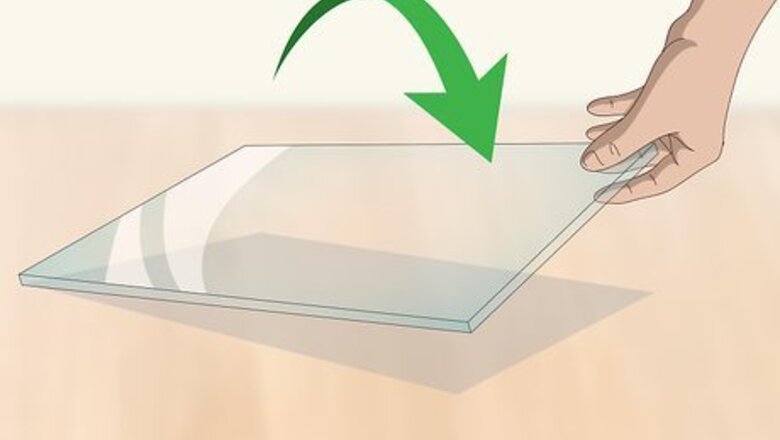
views
X
Research source
Cutting a Straight Line by Scoring the Acrylic
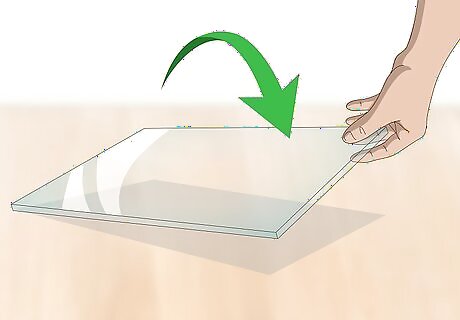
Set the acrylic on a flat surface. To make it easier to work with, find a flat surface big enough to accommodate your plastic sheet. However, you can't use the floor, as you need an edge to break the acrylic over later.
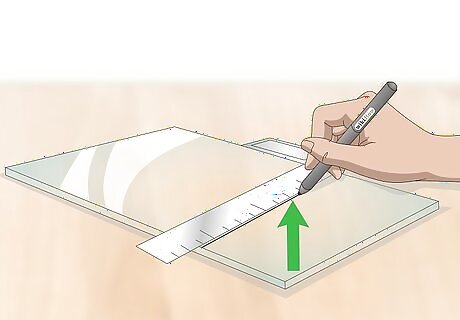
Mark your line. Begin by deciding where you want to cut the acrylic. Measure it out, and use a ruler to make a straight line. You can mark the line with a permanent marker or grease pencil, or you can just use the ruler as a guide for your blade.
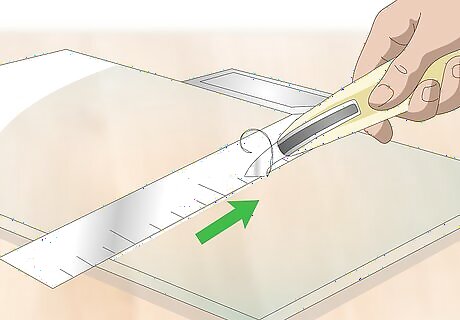
Score the line in the acrylic with a plastic scoring blade. Using your ruler as a guide, run a plastic scoring blade along the cutting line, trying to make one continuous line with gentle, even pressure. Pull the blade towards you along the line. It's especially important to get a straight line on the first go-round, as that line guides your subsequent lines.
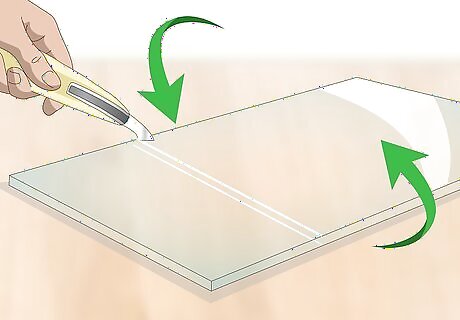
Deepen the cut using the scoring blade. Run the blade over the line several times until you have a substantial groove. Once you do, flip it over, and make a line along the backside that follows the line on the other side. Score it several times as well.
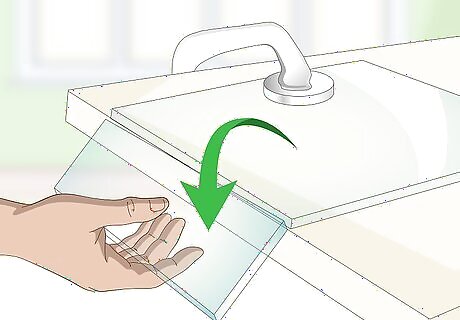
Break the acrylic sheet. Place the line you've scored directly along the edge of the table. Using clamps to hold the sheet to the table makes the process easier. Break the sheet at the scored line by pressing down on the outer edge in a quick motion. You can wrap your hand around one edge and use your body weight to push down.
Sawing Acrylic
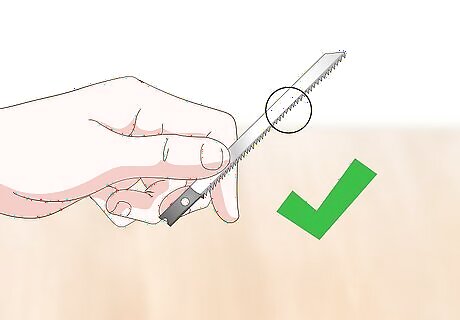
Use a blade meant for acrylic. For plastic, you need a blade with a high tooth count. Look for a blade that says it's made for acrylic or plexiglass. You'll get a much cleaner cut with these blades. You can use a regular blade, but the cut will be more jagged.
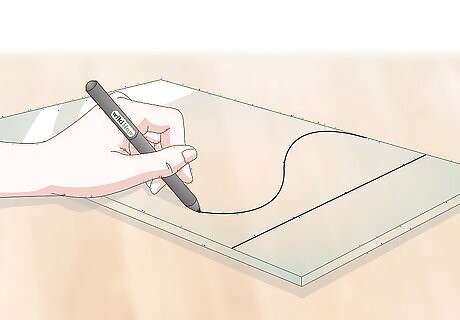
Mark the cut. Before beginning, mark what you want to cut with a permanent marker. With a circular saw, table saw, or saber saw, you can cut a straight line. With a jigsaw, you can cut curves. Use a straight edge if necessary. Placing masking tape over your cut line can help you make a cleaner edge with a jigsaw.
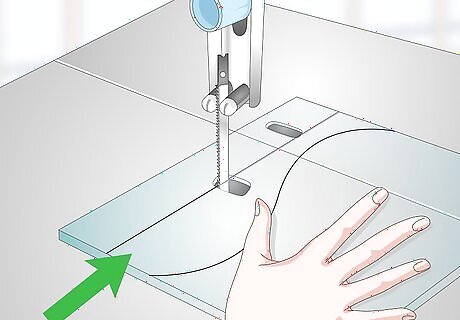
Push the acrylic through a table saw for a straight cut. Start at one edge of the mark you made. Push the acrylic through the table saw at a steady pace, being sure to keep your fingers out of the way of the saw. Don't move too quickly, as you'll create a rougher edge, but don't go too slowly, as you can melt the plastic.
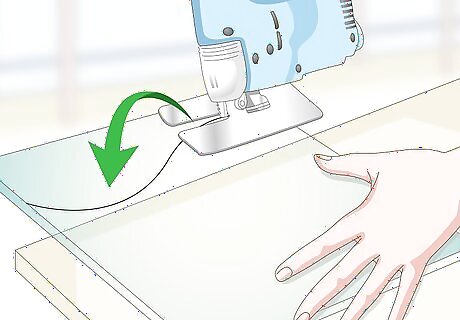
Cut a curved line with a jigsaw. Set up the acrylic glass on 2 beams so that you can cut through it with the jigsaw. Push the jigsaw from the outer edge towards your body along the line you made, so you can constantly keep your eye on the blade and the line. If you get stuck at an angle, pull the jigsaw out the way you came, and cut from the other edge.
Sanding the Edges
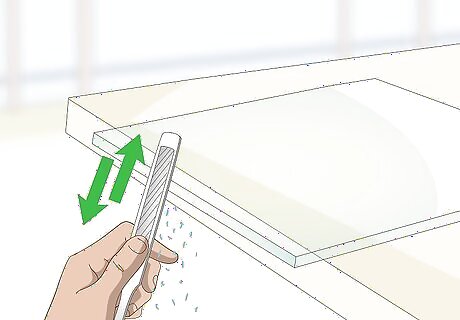
File down any sharp burrs with a metal file. Check for any large chunks that the saw or scoring method left behind on the edge. Use a metal file to smooth them out so they are even with the edge you cut.
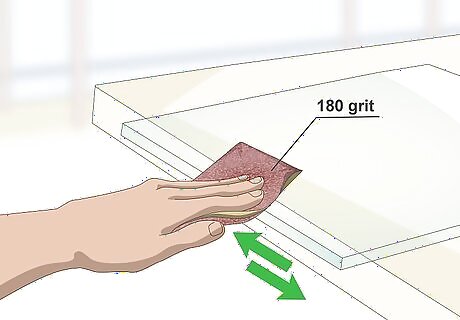
Sand the edge 180-grit waterproof sandpaper. With the sandpaper on a sanding block, apply water to the sandpaper. Use enough to get the sandpaper thoroughly wet. Sand down the edge. Move to finer and finer sandpaper to refine the edge, ending up with 600-grit sandpaper. Purchase waterproof sandpaper designed for plastic.
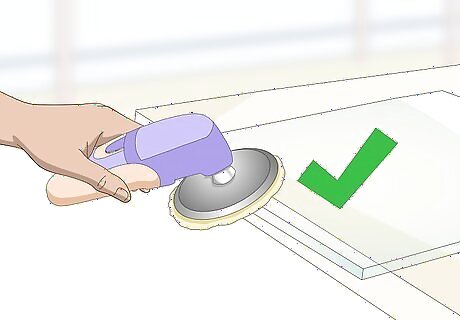
Buff the edge. Attach a buffing edge to your electric drill. Rub the buffer with a polishing compound, and then buff down the edge until it is smooth and shiny. This step really refines the edge, but it is not absolutely necessary. If you don't have a buffing edge, you can stop with fine sandpaper.




















Comments
0 comment